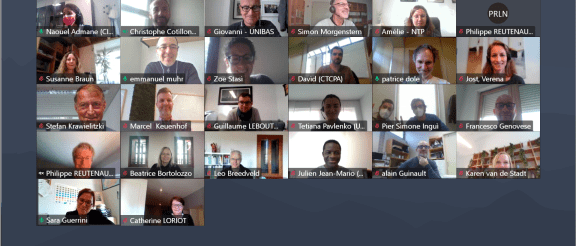KIDV continues as Verpact
November 6, 2025
On 2 February, a final conference marked the end of MyPack, the European research programme to develop and commercialise new sustainable packaging technologies for food. KIDV and Wageningen University & Research participated in MyPack from the Netherlands. The research was funded by the European Union's Horizon 2020 programme and started in November 2017.
Companies and research institutions from France, Germany, Greece, Switzerland, Italy and the Netherlands participated in MyPack. The research focused on sustainable packaging innovations, which reduce the amount of food waste and thus reduce the environmental impact of food and packaging waste. This can be achieved through technical innovations or adjustments to packaging, or for example through the use of biobased and biodegradable plastic packaging, but also by influencing consumer behaviour. Research into many of these aspects was carried out in MyPack.
In the (online) closing conference, a colourful array of results was presented. One example was the research into the effects of under- and over-packaging on food waste. Or how a special valve in a salad pack keeps vegetables fresh for longer. A complete overview of the research packages and deliverables can be found here.
The KIDV supported research conducted by Wageningen University & Research (Marketing and Consumer Behaviour), including the manual production of several dozen sample packs for fresh leaf lettuce, baby food and biscuits. Researcher Giulia Granato used this to study how new technologies are accepted and adopted by consumers and how the sustainable behaviour of consumers can be stimulated. She examined which implicit or explicit signals work to convey to consumers that the packaging they hold in their hands is sustainable.
In three different studies, Granato tested how consumer panels reacted to explicit packaging elements (such as sustainability logos, explanations about the composition and disposal of the packaging, etc.) and to implicit elements (such as the sound, feel and look of the packaging). In other words: how are physical packaging features perceived and 'weighed' by the consumer? What role do they play in the final decision to buy or not to buy the product? Granato showed that - under different circumstances - it is possible to positively influence the perception of sustainability and also the sustainable disposable behaviour of consumers. This knowledge can be used in the development and marketing of new packaging technologies.
In October 2021 Giulia Granato gave a presentation on her research in a KIDV webinar on consumer behaviour. It was recently published in the Journal of Environmental Psychology.
Together with its French partner, KIDV also produced a first version of a tool to make all the knowledge generated by the MyPack research accessible to a wider audience. The tool can be found on the MyPack website soon.
